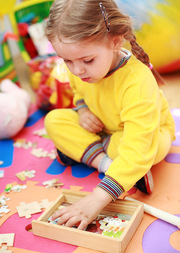How to Build Self-Esteem in Teens for Good Mental Health
From body image issues to peer pressure and academic difficulties, teens face different challenges. These can affect their self-confidence, which can lead to negative self-talk and the fear of failure. You can promote self-esteem in teens to help them deal with their everyday challenges.
What is Self-Esteem?
Self-esteem refers to how a person sees, feels about, and values themselves. Teens with healthy self-esteem are more likely to be confident, have a more positive mindset, and have healthy relationships with others. Moreover, they have the ability to face challenges in life and bounce back from failures.
Having healthy self-esteem is different from being overly confident or feeling superior to others. People who have high self-esteem will view themselves positively, but also in a realistic manner. They accept that they can make mistakes and have flaws, but know that they can improve and grow.
Why is Self-Esteem Important in Teenagers?
Adolescence is an important part of life because this is when a person goes through big changes — not just physically but emotionally and socially as well. During this period, teens are learning to become more independent and make decisions for themselves. By having a positive self-concept, they are more likely to make good choices and endure life’s challenges.
During this period of big changes, teens need the support of their parents and caregivers in developing healthy self-esteem. This is because a teenager’s self-esteem can influence their performance in school, relationship with adults and peers, and mental health.
For example, teens who have low self-esteem might easily feel discouraged by low exam scores, making them believe that they’re not smart enough. This can reduce their motivation to study. On the other hand, teens with healthy self-esteem will accept their mistakes and use them as an opportunity to learn more.
What Factors Can Influence a Teenager’s Self-Esteem?
How a teen sees and feels about themselves can be influenced by the following factors:
Thoughts
A teen’s inner voice creates an internal monologue as they go through their day. This voice could tell positive things that motivate them to be better persons, but it could also be unhelpful self-talk that could bring down their self-esteem.
Negative or distortive thoughts can impact how a teen sees themselves especially if they become a constant pattern of thinking. One example of a thinking error is ‘all-or-nothing’ thinking, where a person sees things in black or white, and not something in between. For example, something could either be good or bad, right or wrong, or a success or failure.
This kind of thinking can lead to perfectionism, which is unrealistic and unattainable. When a teen can’t achieve what they think is ‘perfect’, it can lead to hopelessness, the avoidance of challenges, and doubt in their abilities.
Environment
A teen’s perception of themselves is also shaped by the environment they live in, especially during childhood. Children are dependent on their parents and caregivers, so how they are treated or seen by adults will influence how they think of themselves.
For example, a child who is acknowledged for their best efforts even if they don’t win first place in a competition may develop a positive view of themselves. They will learn that they can grow regardless of the results they get.
Life experiences
A teen’s life experiences have a significant effect on their self-esteem. Discrimination, criticism, bullying, family problems, trouble fitting in with peers, or an illness can influence how a teen sees themselves.
Traumatic life experiences may lead a teen to question their self-worth and doubt their decisions and capabilities. When they view themselves poorly, their self-esteem also decreases.
Social Media
When used mindfully, social media can help teens improve their connections with their family and friends. It can also boost their self-esteem by providing an avenue for expressing their talents and creativity.
However, social media can also be detrimental to a teen’s self-esteem. When they constantly see other people’s accomplishments and ‘perfect’ bodies, it’s easy to develop unrealistic expectations for themselves. They end up comparing themselves to other people’s picture-perfect lives, which can lead to feelings of inadequacy, negative body image, depression, anxiety and self doubt.
How Can I Tell If My Teenager Has Low Self-Esteem?
Having low self-esteem can hugely impact a teenager’s life, so it’s important for parents and caregivers to know the signs:
Negative Self-Talk
“I’m so stupid,” or “I can’t do anything right” are just some examples of negative self-talk that you might hear from your teens.
While feeling down from time to time is normal, constantly engaging in negative self-talk might be a symptom of low self-esteem in teens. Instead of motivating them to do better, this can just discourage them from achieving their goals.
Fear of Failure
Teens with low self-esteem are more likely to avoid challenges because of a fear of failure. This is due to unrealistic expectations for themselves and believing that they are not skilled or knowledgeable enough. Teens who have low self-esteem might also have trouble receiving constructive criticism.
The fear of failure can lead to several problems, such as procrastinating on their homework, avoiding difficult tasks, and letting go of opportunities.
People Pleasing
A people pleaser is someone who has no clear boundaries and has difficulty saying no.
Teens who like to please others will prioritize other people’s needs. This is common in teens who have low self-esteem because they might think that their needs and wants are important.
Difficulty Accepting Compliments
A teen with self-esteem problems might also have trouble responding to compliments because they think that they don’t deserve it. For instance, you might hear them downplay compliments or even change the topic when someone praises them.
How to Build Self-Esteem in Teens
While beliefs about themselves are hard to change, it doesn’t mean that self-esteem can’t be built and developed over time. With your help, you can help your teen achieve healthy self-esteem.

1. Provide unconditional support and love
Although teens are at the age when they’re looking for independence, it’s still important for parents to be available for their children. Your teen needs your support now more than ever when they are still trying to find their own path in life.
They need a healthy environment where they are loved and cared for, so they can also learn to love themselves. When they know that you believe in them, they are also more likely to believe in themselves.
2. Focus on their strengths
It’s easy to get discouraged when the people around you always point out your weaknesses. That’s why you can shift their perspective in life by helping them focus on what they can do.
For example, sit down with them and think about the things they are good at. They might excel in art, science, or sports. Help them cultivate their confidence by providing support for their interests.
3. Set realistic goals
It’s normal to wish for good things for your children, but it’s also important to set realistic goals that they can achieve. When they fail to meet unrealistic expectations, they might feel disappointed and inadequate, which can lead to low self-esteem. Next time, they might end up feeling discouraged because they think that they will fail.
When setting goals with your teen, it’s important to start small — especially if they are already suffering from low self-esteem. With each small win, you can help them slowly build their confidence back. They also need the freedom to make mistakes, because it’s a normal part of growth.
4. Celebrate their achievements
Teens with low self-esteem might have difficulty accepting compliments because they don’t feel good enough. That’s why it’s helpful to teach your child to celebrate their achievements.
Celebrating their achievements doesn’t have to be all about the results, but their effort and progress too. By letting them understand the value of their hard work, they won’t always focus on the outcome. This way, they are more likely to try and improve even if they make mistakes or don’t succeed.
5. Encourage positive self-talk
Teens with low self-esteem might find it difficult to avoid having negative thoughts. Positive self-talk, which involves talking to yourself in a more kind and compassionate manner, can help boost your teen’s self-confidence and self-worth. When practiced daily, it can also help them reduce stress and overcome obstacles in life.
One way to practice positive self-talk is to change negative thoughts so they become positive. For instance, a teen might feel frustrated because they got a lower score on an exam than expected. Instead of thinking, “I’m so stupid. I studied for hours but got a low score,” it might be more helpful to think, “It’s alright because I know I did my best. It’s not that bad because I still passed. I can look at what I did wrong and do better next time.”
As a parent, you can also encourage positive self-talk by practicing it yourself. Be aware of your child’s negative thoughts and help them realize when they are being too critical of themselves. Better yet, have conversations on what they are feeling, so you can practice positive self-talk together.
6. Avoid comparing them to others
They may not say or show it, but teens value your opinion. This means that if they often experience being compared to others, they might develop low self-esteem. Remember that each teen is different, and comparison will just make them think that they are inferior to other people.
Instead, it might be more helpful to know more about your child’s strengths. Be proud of what they’ve accomplished and the effort that they put into their work. Instead of comparing them to others, it’s better to use their past self as a standard, so they can see how they’ve grown over time.
7. Provide them with constructive feedback
You can help your teen correct their mistakes by providing them with suggestions that can help them make improvements, instead of focusing on the problem. Be objective and direct, and provide specific examples of how they can make something better. The most important thing is to be encouraging and open to help.
Teaching your teen how to respond to feedback gracefully can help them adjust better in school and in the workplace. This begins by helping them realize that mistakes are not something to be scared of, but a chance to become better.
Help Your Teen Achieve Success By Promoting Healthy Self-Esteem
Having healthy self-esteem can help your teen improve their academic performance, build healthy relationships, and overcome obstacles in life. Helping them change negative thoughts about themselves can take some time. With some practice, you can help them develop a more positive opinion of themselves by following the steps highlighted above.







